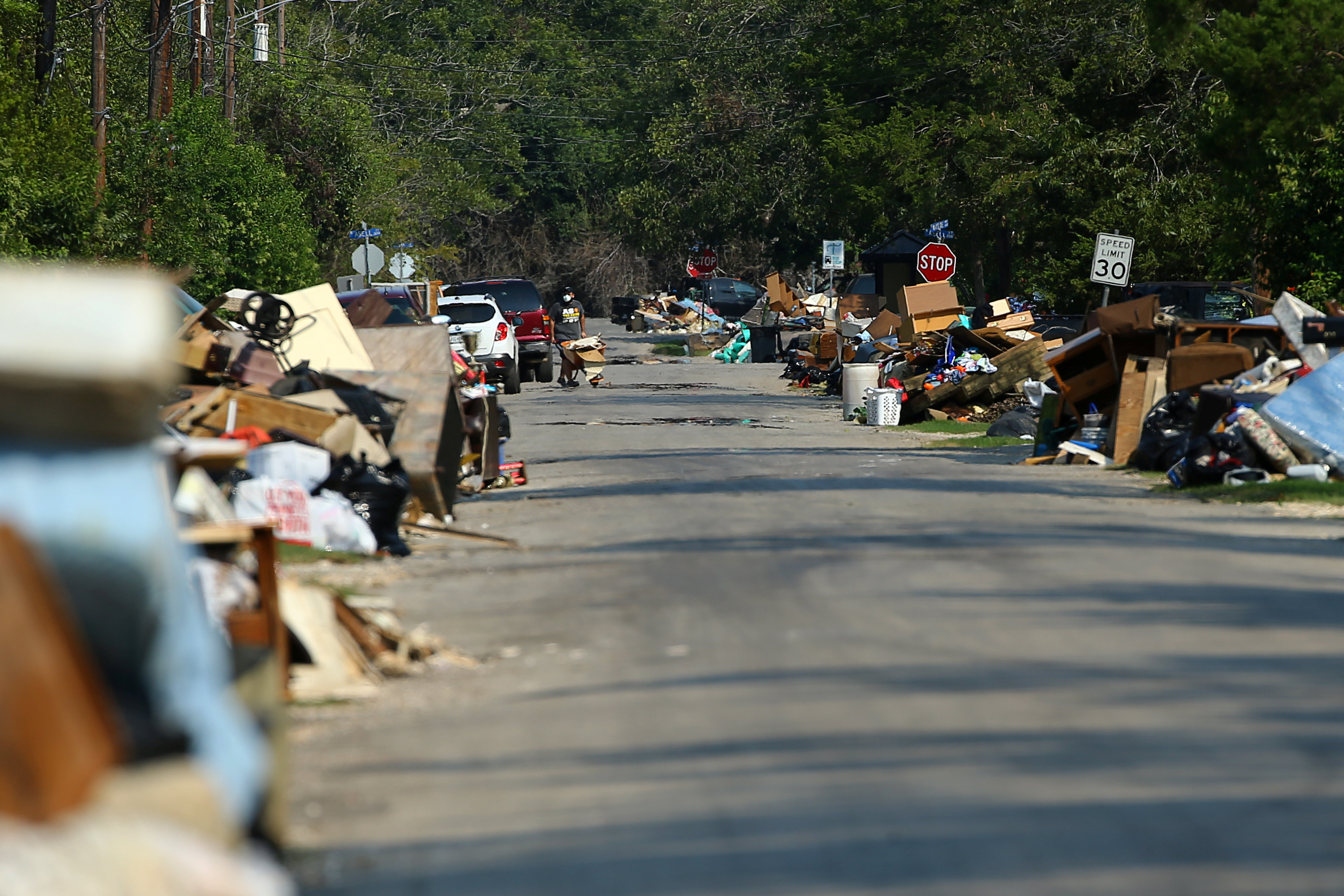By Bryan Sims
HOUSTON (Reuters) – For Texas residents affected by Hurricane Harvey, life in the storm’s aftermath involves juggling insurance claims, home repairs and work. But coping with loss is stirring very different feelings.
Staff at the Sugar Land campus of the University of Houston began their first day at work on Tuesday sharing storm experiences and consoling those whose homes were damaged.
“It’s very healing for people,” Kathryn Tart, dean of the university’s College of Nursing, said. “It helps us move on to the really difficult next stage – rebuilding.”
In an area of West Houston where some 3,000 homes suffered severe flooding and where water releases from two reservoirs continue to swamp neighborhoods, anger surfaced.
“I look out my kitchen window and there is a river that will always be there,” said Bryant Banes, who is a lawyer. He filed a lawsuit against the U.S. government in federal court claiming damages to his and neighbors’ homes and businesses from the reservoir releases.
The decision to release waters to relieve pressure on the reservoirs amounted to an improper taking of property, the lawsuit claims. “People have lost their homes and it is their responsibility to compensate residents,” Banes said.

Flood-damaged contents from people’s homes line the street following the aftermath of tropical storm Harvey in Wharton, Texas, U.S., September 6, 2017. REUTERS/Mike Blake
Harvey hit Corpus Christi in southern Texas on Aug. 25 but took the greatest toll on Houston and areas east of the city. The storm killed as many as 60 people, dumped more than 50 inches (127 cm) of rain and caused damages estimated as high as $180 billion, including to 312,000 homes along the coast.
The U.S. House of Representatives on Wednesday approved roughly $8 billion in initial emergency aid for Harvey relief and rebuilding. A Senate vote is expected later this week.
In Houston’s theater district, which sits along a drainage bayou, performances have been canceled indefinitely as assessments of repairs continue. Houston Grand Opera, Hobby Center for the Performing Arts and Alley Theatre reported flooding to some buildings and parking areas.
In east Texas, Hardin County residents were only able to return to homes on Tuesday. “Water is just now receding,” said Theresa Wigley, the county’s emergency management coordinator. “Recovery is going to be slow.”
The number of people reported missing in Houston, which climbed as high as 137 last week, was down to 18 on Wednesday as families reunited, said Beth Alberts, head of the Texas Center for the Missing.
“It is tragic and wonderful when we can match up people,” she said.
At the same time, more of the region’s energy industry was coming back online. Refiner Phillips 66 <PSX.N> said on Wednesday its Sweeny, Texas, refinery would return to full production by mid-month. Gasoline futures <RBC1>, which spiked last week, were off 2 percent on Wednesday.
Two other storms are threatening energy infrastructure in the Caribbean and Mexico. Hurricane Irma is taking aim at Puerto Rico and Florida, and Tropical Storm Katia is off the Mexican state of Veracruz and forecast to become a hurricane in a couple of days, the National Weather Service said on Wednesday.
(Reporting by Bryan Sims; Writing by Gary McWilliams; Editing by Leslie Adler)
 Carpets, chairs and assorted items are removed from the New Faith Church in the aftermath of flooding from tropical storm Harvey in Wharton, Texas, U.S., September 6, 2017. REUTERS/Mike Blake
Carpets, chairs and assorted items are removed from the New Faith Church in the aftermath of flooding from tropical storm Harvey in Wharton, Texas, U.S., September 6, 2017. REUTERS/Mike Blake
